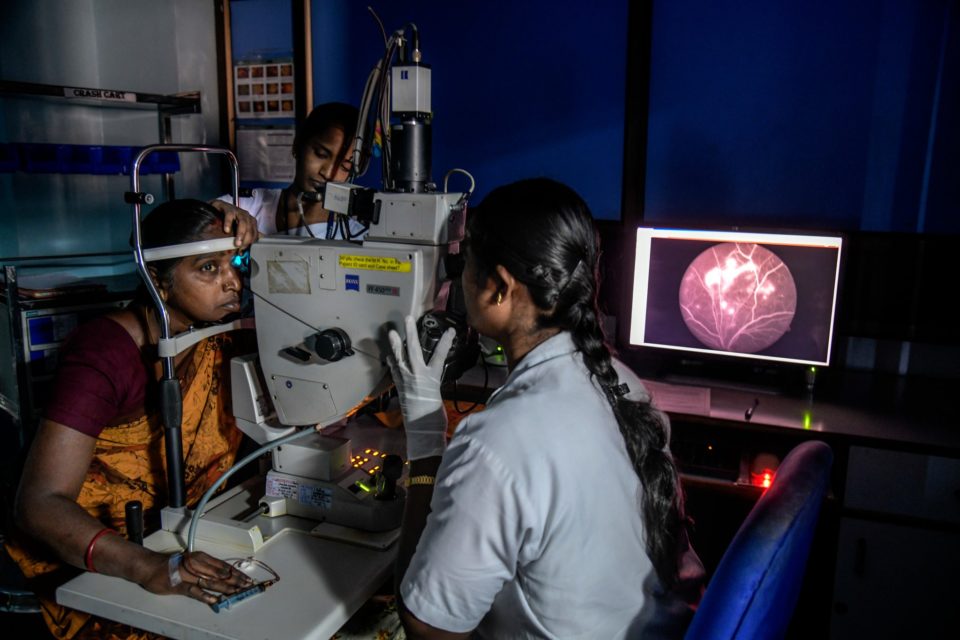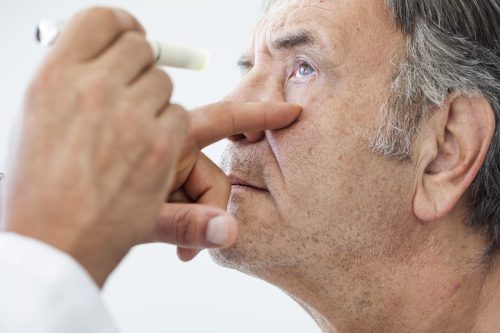
Over five years, patients with an initial diagnosis (ID) of moderate and severe nonproliferative diabetic retinopathy (NPDR) were more likely to develop diabetic macular edema (DME) than patients with proliferative DR (PDR), according to a study presented by Andrew A. Moshfeghi, MD, MBA, at the 37th Annual ASRS Meeting.
This longitudinal retrospective cohort study of US claims included 6,878 mild, 1,761 moderate, and 439 severe NPDR patients and 5,412 PDR patients. All study subjects were aged ≥18 years with newly diagnosed DR as defined by ICD-9 diagnosis codes and five years of follow-up, ≥2 outpatient claims of initial DR diagnosis between July 2007 and April 2012, no diagnosis of DR, DME, or other retinal diseases in the prior 18 months. Participants were censored at time of first event of either diagnosis of DME or intervention (including anti-VEGF or steroid intravitreal therapy (IVT), or focal and pan-retinal photocoagulation laser). Among patients with mild and moderate NPDR, progression to VTDR was assessed. Median time to DME, progression to VTDR, and intervention was calculated.
According to the study findings, over the duration of five years, 64.2% of patients with an ID of severe NPDR developed DME (median 295 days) compared to 45.5% of pts with an ID of moderate (median 559 days), 31.0% of PDR (median 695 days), and 16.3% of mild (median 889 days). A higher rate of patients with an ID of severe NPDR (47.4%, median 504 days) were censored due to receiving any intervention compared to patients with an ID of moderate (33.3%, median 837 days), PDR (34.4%, median 725 days), and mild (23.2%, median 948 days). Moreover, the proportion of patients initiating anti-VEGF IVT was higher in patients with an ID of severe NPDR (31.9%, median 579 days) compared to moderate (17%, median 1015 days), PDR (16%, median 758 days), and mild (5%, median 1,113 days).
“These results, along with our finding that many patients with moderate NPDR progress directly to PDR, underscores the need to refer moderate and severe NPDR pts to a retina specialist,” the researchers wrote.
Moshfeghi A. Real World Patterns of Diagnosis, Progression, and Treatment in Patients with Diabetic Retinopathy Over Five Years. Presented at the 37th ASRS Annual Meeting; July 26-30, 2019; Chicago, IL.
Read more (login required): https://meeting2019.asrs.org/ondemand#/ondemand/papers/real-world-patterns-of-diagnosis-progression-and-treatment-in-patients-with-185







 © 2025 Mashup Media, LLC, a Formedics Property. All Rights Reserved.
© 2025 Mashup Media, LLC, a Formedics Property. All Rights Reserved.